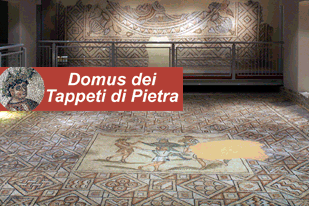The church of S. John the Baptist in Ravenna.







The church of S. John the Baptist in Ravenna. Hotels near San Giovanni Battista.
Photo: 1)San Giovanni Battista facade, 2)Some rests of Santa Croce, 3)Painting of Francesco Longhi, 4)Painting of Giovanni Barbiani,5)Painting of Domenico Cignani, 6)Inside of the Basilica, 7)Via Zanzanigola
For the locals of Ravenna it is known as "San Zvan dla zòla", San Giovanni of the onion, as the onion had a fair dedicated to it that was held in June on the parvis, which housed a quadri-portico demolished in 1634.
The church dates back to at least the IX century, such as the cylindrical bell-tower structure, but the current aspect is the result of renovation work in the modern era.
In the period between the 17-18th century the archbishops curia undertook several renovations operations on the churches of many of the twenty-one town parishes.
Some of which were subject to demolition and renovation work, especially to offset the result of subsidence, such as Santa Maria Maggiore, Santa Croce, Sant'Eufemia, the cathedral complex and the no-longer existing Sant'Andrea Maggiore, Sant'Agnese, Santa Maria in Coeloseo, Saints Nicandro and Marciano.
Renovation work was also undertaken on the church of San Giovanni Battista, which was rebuilt in 1683 to the project of Pietro Grossi, one of the most active architects of Ravenna in the second half of the 17th century who was responsible for much renovation work.
The church hosts a whole series of paintings by Ravenna artists of between the XV-XVIII century such as a: a Madonna with child and the Saints Alberto and Sebastiano, by Nicolò Rondinelli, one of the leading personalities of the second half of the 15th century, trained by at the Venetian school of Bellini.
Two altars, again with Madonna, Child and saints by Francesco Longhi, son of Luca and brother of Barbara, a family of painters active in the 16th century.
A Sant'Antonio abbot, of the early 17th century, by Giovanni Barbiani, founder of a family of artists active between the 17-18th century who built a kind of local school.
His son Giovan Battista being responsible for the altar of the Madonna with Child and Saints Caterina, Eufrosina, Simone Stock, Andrea Corsini and a bishop saint, which was touched up in the 18th century by Andrea, his most famous descendent.
While the Madonna, and Child and Saints Crispino and Crispiniano dates back to 1771, by Domenico Cignani.
In 1408 in the vicinity of the church the convent of the Carmelite Fathers was built, that run a hospital, one of the six operating in the town from the early XVI century, for a population of under ten thousand inhabitants.
In front of the church, via Pietro Alighieri was crossed by via Zanzanigola, of which only the Southern section remains; the other having been destroyed by bombing in 1944.
The Zanzanigola again marks the western bank of the Padenna canal, that flowed here as from the XV century, the corresponding eastern bank being in via Rossi.
At the point it would appear that a ferry existed and that the church was known as San Giovanni ad Naviculam. The curious name of Zanzanigola would appear to have been derived from the local dialect, "Sàn Zvan a navigula".
Prof. Gianni Morelli, Anna Missiroli
The pleasure of fine accommodation in the centre of Ravenna: we recommend the Fabbri hotels for a pleasant stay as follows:
The Centrale Byron Hotel, 3-star hotel in the centre of Ravenna, close to the main momuments;
The Bisanzio Hotel, 4-star hotel in the centre of Ravenna, close to the main momuments;
Once you have reached the hotel and parked your car, forget it and walk everywhere, because everything is within walking distance.
© reserved copyright





